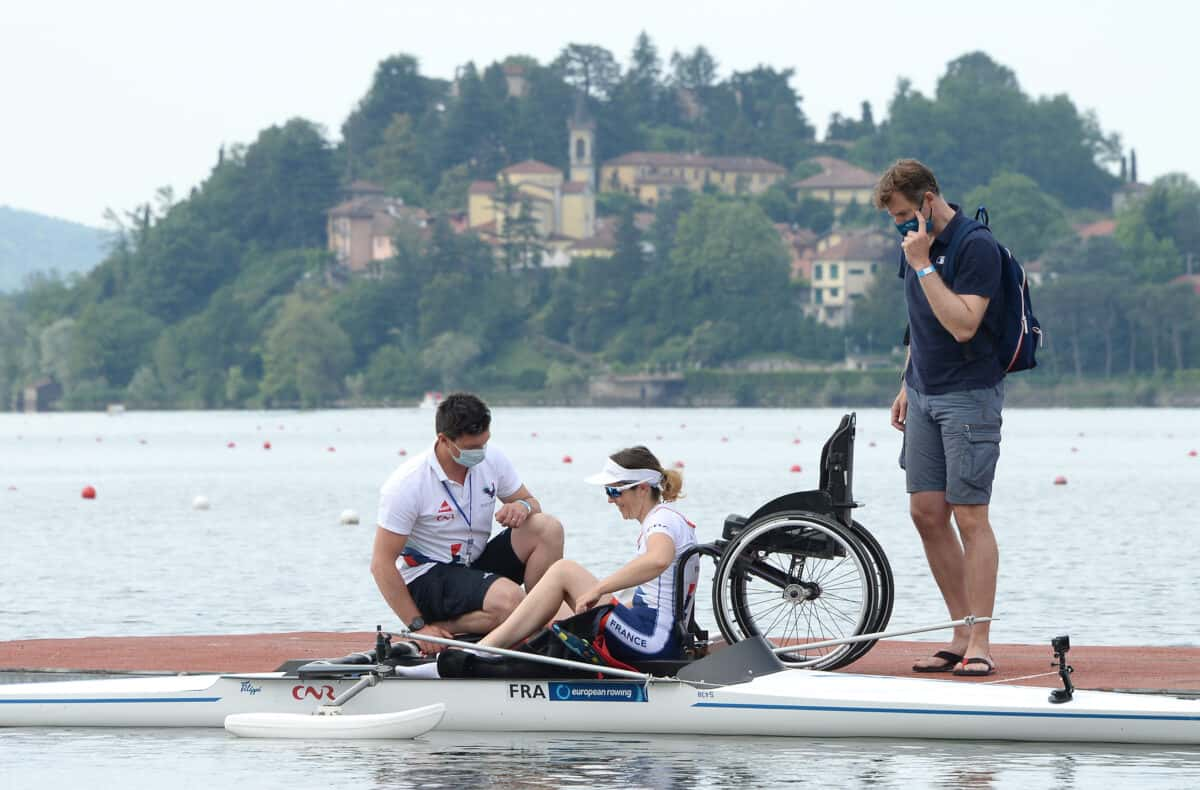
12 Aug 2021
How para rowers get grouped - Paralympic rowing classification
Para rowers are getting ready to hit the waters of Tokyo’s Sea Forest Waterway for the Paralympic Games regatta taking place in less than a month from 27 – 29 August 2021.
As the world prepares for another round of thrilling races, Liz Soutter, World Rowing’s Sport Manager and Classification Coordinator, answers some frequently asked questions about classification for Para rowing’s four Games events.
World Rowing: What para rowing events are at the Paralympic Games?
Liz Soutter: There are three “sport classes” with four events. The PR3 mixed coxed four, the PR2 mixed double, and the PR1 men’s and women’s singles. “PR” stands for Para rowing. The sport class numbers 1, 2 and 3 refer to the level of function rowers have as it relates to rowing. PR1 is the lowest level of function; PR3 is the highest.
WR: What is classification?
LS: Classification is the process by which athletes are assessed based on function at it relates to rowing and put into a sport class. They are not classified based on impairment, but on how that effects their rowing function. Sometimes you have athletes with the same impairment in two different sport classes.
WR: Do athletes need to be classified to race para rowing events?
LS: There are different levels of classification. National classification is needed to compete at a national level. International classification is needed to compete at a World Rowing event.
WR: What is the first step in this process from an athlete’s perspective?
LS: Athletes who want to be classified have to go through their national federation or in smaller nations it might be their National Paralympic Committee. In a secure way, the athlete shares a diagnosis, proof of their impairment and documentation about how the it effects their range of motion, coordination and things like this.
WR: What about international classification?
LS: National federations request classification for athletes when they submit their entries for a World Rowing event. We do classifications just before an event.
WR: Who are the classifiers and what do they do?
LS: There is a panel of one medical and one technical classifier, who are specific to rowing. They go through the athlete history and the athlete does range of motion and strength tests and assessment on the erg to see how their impairment effects their ability to row.
WR: Why is classification important to para rowing?
LS: It is a fairness thing. You are looking at the rowing stroke as a whole and saying, this group of athletes can complete this part of the rowing stroke, we want them to be competing together. Of course, there will always be a range of function in each class. This is the case in every para sport. We are trying to create competition opportunities that are as fair as possible.
WR: Has para rowing’s focus on mixed crews of men and women influenced other aspects of the sport?
LS: Mixed boats have always been a part of para rowing. Equality takes many different forms and it is something very present in the para community. We are even seeing it in coastal rowing too, which may become an Olympic discipline for rowing. We are moving away from the traditional [men only or women only] sense.
Find out more about this year’s Paralympic regatta here.

